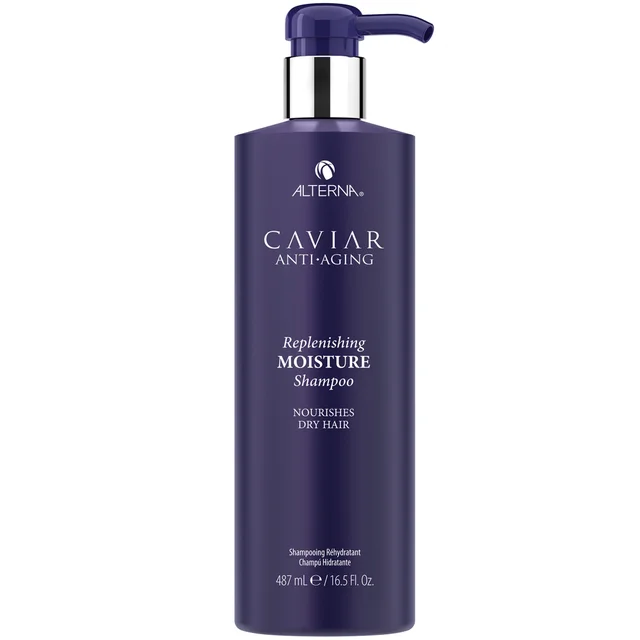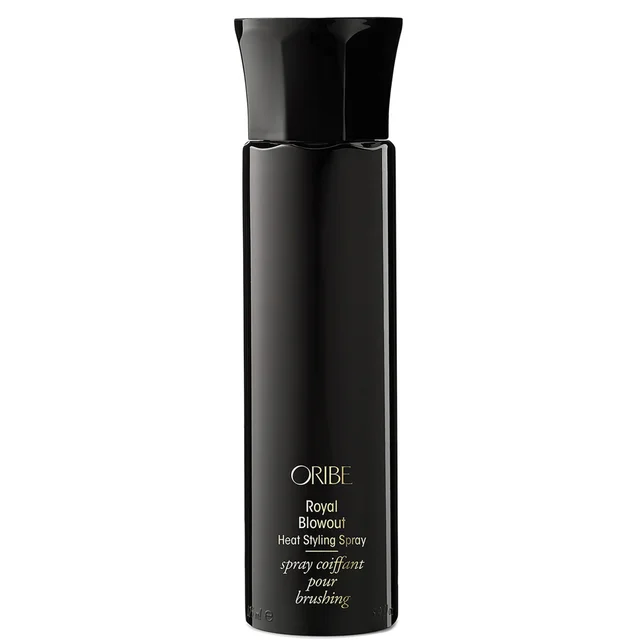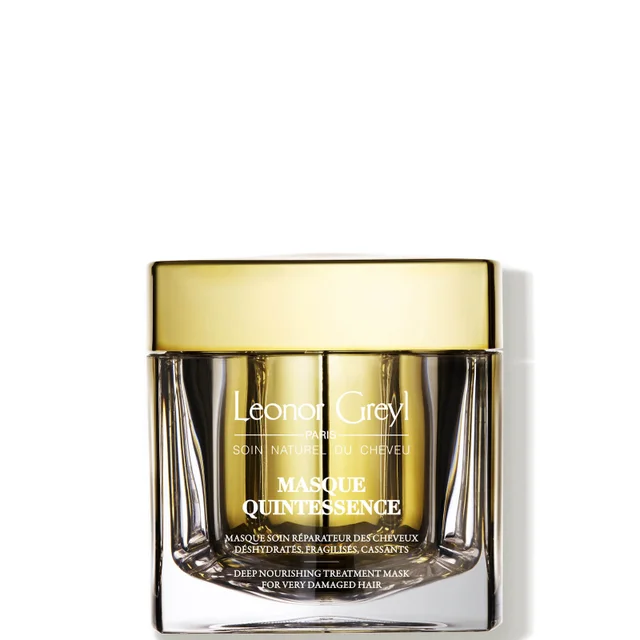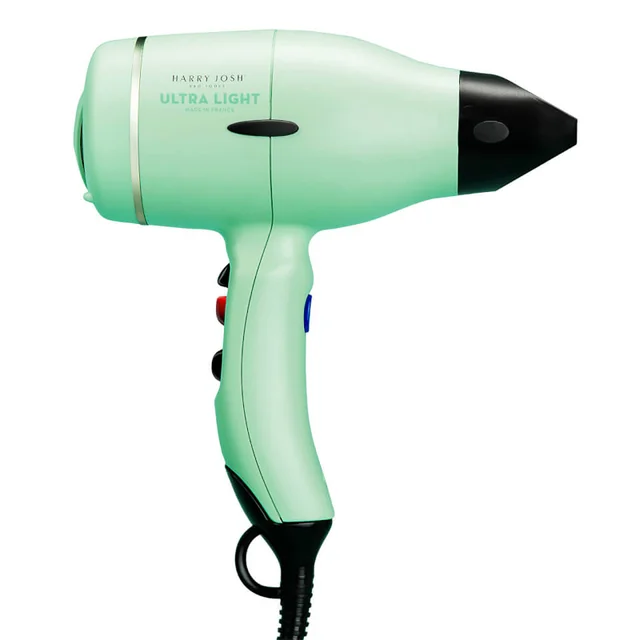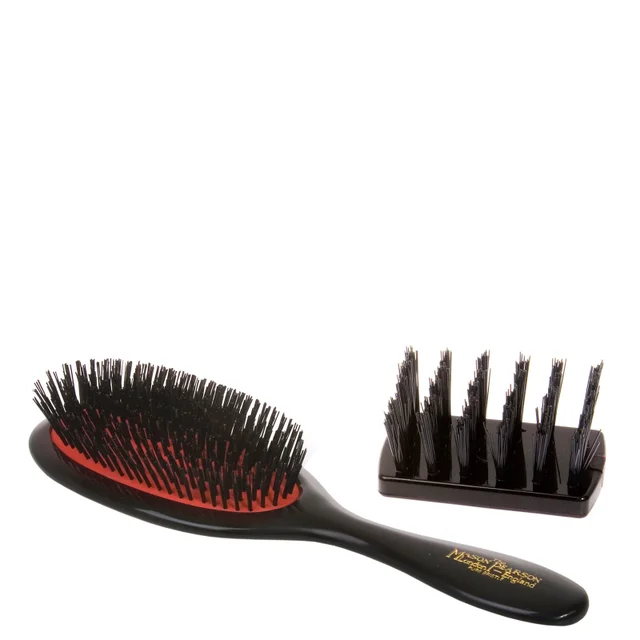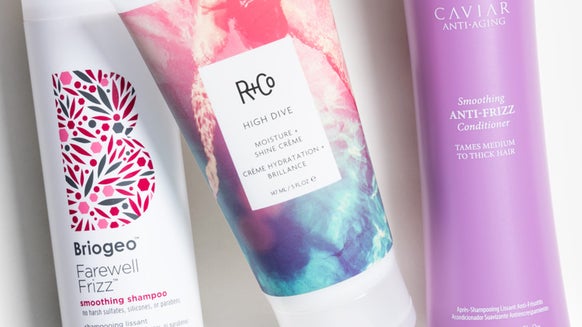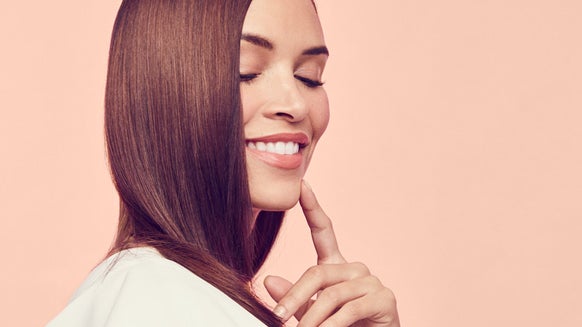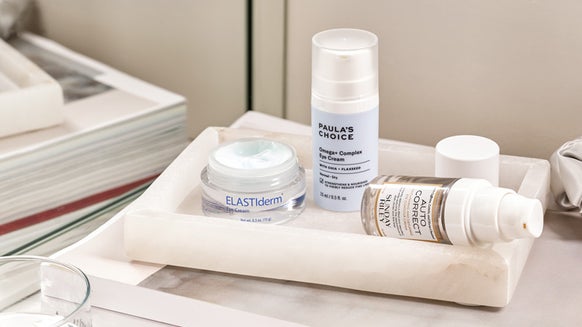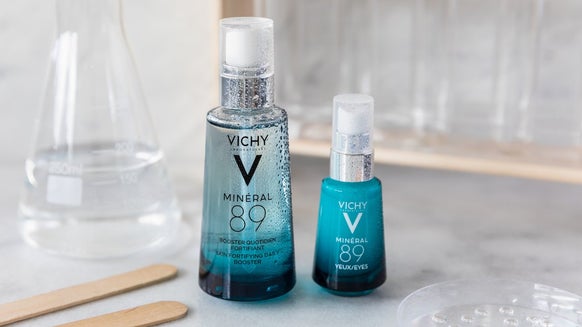How to Prevent and Repair Heat-Damaged Hair, According to Pros
From blow drying and curling to flat ironing and waving, our tresses endure a lot of heat styling on a daily basis. While hot tools can definitely leave your hair looking more stylish and put together, over time, heat damage can lead to dry, dull and brittle strands. And if you color or chemically process your hair, this damage is compounded, since it’s coupled with the effects of the chemicals used to produce your desired hue.
“When the hair strand is compromised from heat, the outer cuticle layer—aka the hair’s protector—begins to break down and exposes the medulla, the strongest part of the hair,” explains Gabriella Chillino, New York City-based hairstylist. “This will cause loss of melanin (color) in the hair and a decrease in nourishment, which leads to visibly broken, dry and sometimes even frizzier hair,” she adds.
Unfortunately, no hair type is immune to heat damage, from the curliest of curly to the straightest of straight. Whatever the texture, however, there are thankfully plenty of ways to minimize heat damage without having to toss out our beloved heat-styling tools altogether. Here, top hairstylists share their go-to solutions for protecting strands from heat damage, no matter the texture, length or color.
1. Get regular trims
While at first thought, cutting your hair might not seem like it could help prevent heat damage, the reality is the healthier your strands, the less damage heat will cause. “Once the hair begins to break or split, it will continue to work itself up the hair shaft to the point where you have all of these short hairs you didn’t have before,” says Chillino. You can prevent this by trimming your hair even just once every couple of months, although stylists recommend doing so every 8–12 weeks.
Related read: How to deal with split ends.
2. Use a high-quality shampoo
To strengthen the hair barrier so that it’s strong enough to withstand heat damage without breaking, Cris Baadsgaard, Colour Collective Partner stylist and owner of Scene Salon in Dallas, Texas, recommends using a high-quality shampoo and conditioner to help moisturize and detangle. “Rahua's Hydration Shampoo and Alterna's CAVIAR Anti-Aging® Replenishing Moisture Shampoo are excellent choices,” she says. “After washing and conditioning, use a light spray or detangler like R+Co’s PINSTRIPE Intense Detangling Spray to add another layer of strengthening and protection,” notes Baadsgaard.
3. Air dry whenever possible
Air drying might take longer, but it will save your hair from serious damage in the long run—even if you do it just once or twice a week. If you have naturally curly hair that you love to wear straight or super straight hair that you love to make wavy, Tina Malhotra, hairstylist at L’Appartement Hair Boudoir in New York City, suggests allowing your hair to air dry first and then applying the hot iron onto your newly air-dried strands. Alternatively, you can try hairstyles that don't involve heat, such as braids or even a messy bun.
Related read: How to air-dry your hair the right way.
4. Use a moderate heat setting
One of the biggest mistakes people make when using a hot iron is turning the heat setting up too high. The sweet spot for most hair types is 150–200 degrees, according to Chillino, although coarse, thicker textures may need closer to 300 degrees. “I would never use [a settling] higher than 400 degrees because that’s when all textures will start to get damaged,” she says. “I tell my clients that they are better off doing a few more passes with the flat iron on a low heat setting than only a few passes on a really high setting,” says Chillino.
5. Always apply a thermal protector
Before you take the heat to your hair, even with just a blow dryer, it’s always recommended that you use a heat protectant, which creates a barrier between your open hair shaft and the heat. Malhotra’s go-to is Oribe's Royal Blowout Heat Styling Spray. “Spritz over wet hair a few times and then use a wide-tooth comb-like The Wet Brush’s Comb Detangler to distribute it from roots to ends of hair,” she says. “As an added bonus, a lot of heat-protectant serums tend to detangle strands, as well, creating less friction and breakage when you comb through,” explains Malhotra.
6. Use hair masks regularly
If you do heat-style often, one of the best ways you can expedite your hair’s recovery is to do a hair mask at least once a week. Stephanie Brown, Master Hair Colorist at the Eddie Arthur Salon in New York City, loves Leonor Greyl’s Masque Quintessence Deep Nourishing Treatment Mask, which contains a blend of hibiscus and coconut oils to condition and protect hair from heat and environmental aggressors. “This mask will help keep moisture in your hair and add a layer of protection when you style with hot tools,” she explains.
Related read: Must-have hair masks for every hair type.
7. Invest in a really good blow dryer and brush
This is one of the simplest ways to cut out some of the damage you may be causing your hair, says Chillino. “A better blow dryer with a proper nozzle, like the Harry Josh® Pro Tools Ultra Light Pro Dryer, will eliminate having to work as hard and long on your hair because it will take less time and therefore apply less heat,” she says. She also recommends using a boar bristle brush, like the Mason Pearson Handy Bristle Hair Brush, since it doesn’t heat up the way a ceramic or metal brush does. “Instead it pulls the natural oils through the hair without drying the hair out,” she notes. “A ceramic brush will be consistently heating the hair and may be too much for certain textures,” adds Chillino.
Related read: 10 reasons to love the new Harry Josh Pro Tools Ultra Light Pro Dryer

From the latest hair and makeup trends to the best solutions for your skin issues, we've got all your beauty concerns covered!
